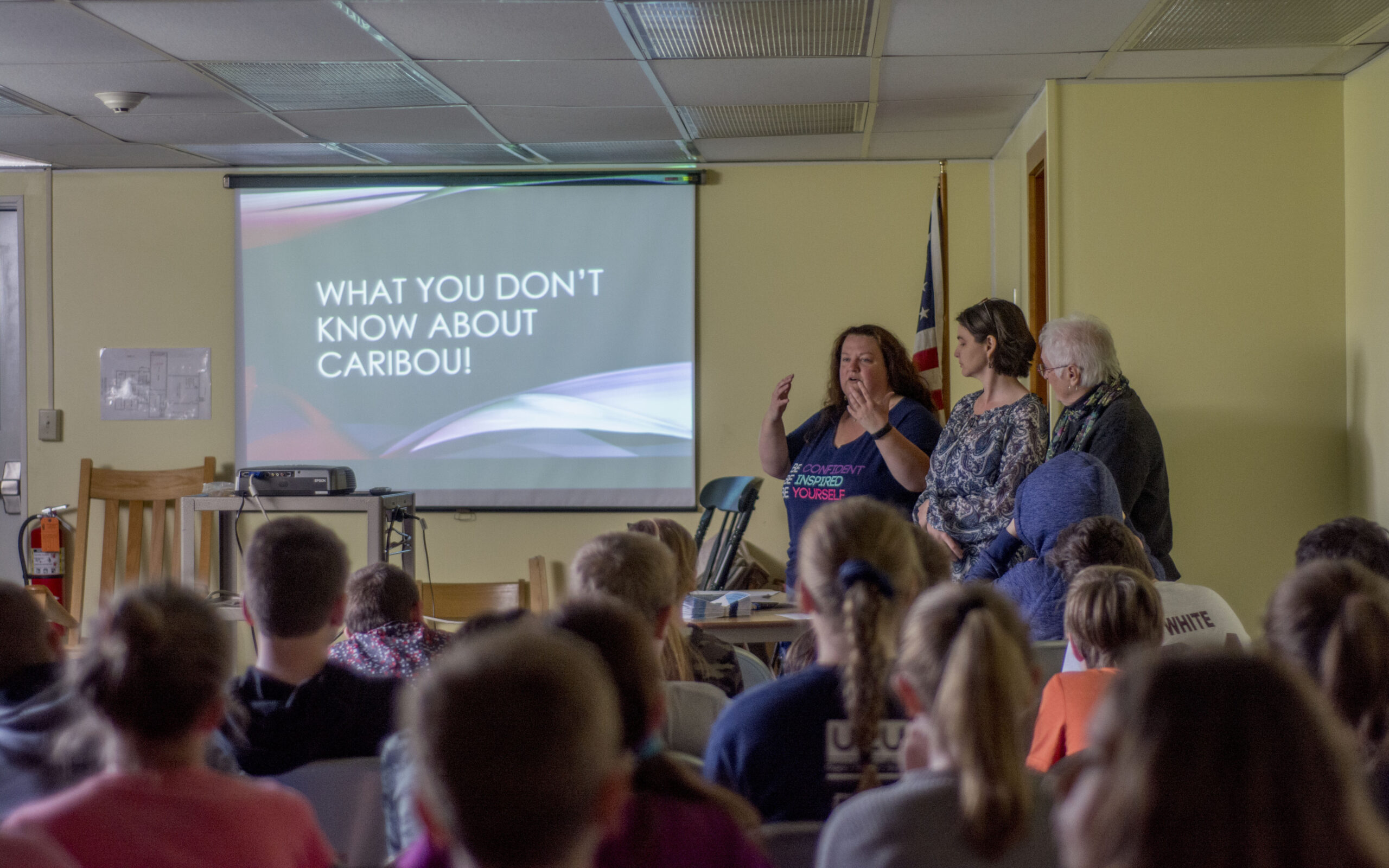
CARIBOU, Maine — Caribou sixth-graders learned about their city’s humble beginnings as 10,000 acres of undiscovered land up to its present state on June 4 and 5 during a Caribou Public Library event focusing on the history of Caribou.
Children’s Librarian Erin Albers said about 45 attended the event each day, and that the event is one of many collaborations between Caribou’s library and school system.
“Last year the school did a ‘History of Caribou’ program,” Albers said, “but it was very different from what we’re doing today.”
Last year’s event focused on researching information in the library archives and about using primary and secondary sources, while this year’s event featured a PowerPoint presentation detailing the city’s history from the early 1800s to the 1980s. The presentation began by focusing on 1807 when the land was first surveyed by Charles Turner to 1844 when S.W. Collins first built a saw mill on the Caribou stream, all the way up until 1967 when Caribou became a city.
Albers said the presentation would not be possible without the help of Wendy Bossie of the Caribou Historical Society and Brenda Bourgoine of the Aroostook Genealogical Society.
“[Bossie] did a lot of research for us and found a lot of photographs,” said Albers, “and she came up with the actual narration of our presentation.”
While this is the second year the library has taught area students about the city’s history, Albers said this is the first time they have presented it.
Ideally, Albers said she would like to see students “connect themselves with their area.”
“When you understand history,” she said, “you get a better understanding of how it affects your own life.”
Bourgoine said the presentation is in conjunction with a class the students are taking at school, and that it allows them to access resources at the library such as archival photos.
One aspect of Caribou’s history that Albers found particularly interesting was that the United Methodist Church moved its parsonage across the street by placing the building on logs and rolling it across the road.
Albers concluded that students “really enjoyed” Tuesday’s presentation.
“At first, when we asked for questions at the end, they were kind of quiet,” Albers recalled, “but then one student raised his hand to ask a question and there were about maybe 10 or 12 more that followed. You could tell they were all thinking about something they wanted to know more about, and they were very engaged.”







